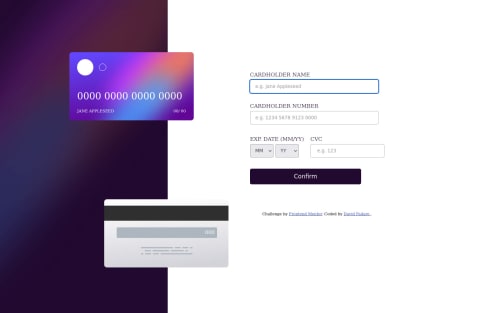Submitted over 3 years agoA solution to the Interactive card details form challenge
Responsive ATM card form using html , css and JavaScript file
accessibility
@davidfadare

Solution retrospective
How would I be able to better implement bootstrap into my project ?
I'm not very good with JavaScript and would like a site where I can ask questions regarding JavaScript, please recommend?
Code
Loading...
Please log in to post a comment
Log in with GitHubCommunity feedback
No feedback yet. Be the first to give feedback on davidfadare's solution.
Join our Discord community
Join thousands of Frontend Mentor community members taking the challenges, sharing resources, helping each other, and chatting about all things front-end!
Join our Discord